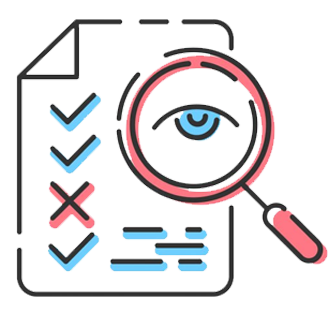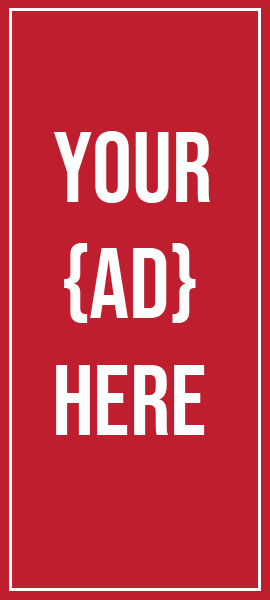
Effective Proposal Writing Tips & Tools
How do I know what I think until I see what I say?
– E. M. Forster
Introduction
As discussed in the earlier chapters, a business proposal is a sales pitch that proposes your product or service to a possible client for a specific assignment, coupled with a cost proposal. This pitch is usually given to the potential client in the form of a business proposal. Many different considerations should be taken into account when creating a business proposal for a company. During the course of a sales call, a client may ask for a proposal in certain circumstances, inquiring about the extent of the work that would be required as well as the costs that would be incurred should the project continue forward. In other circumstances, prospective customers may send out requests for business proposals (also known as RFPs) in an effort to recruit possible vendors.t’s finally time for the real purpose of our journey: writing the actual proposal. This lesson will look at some tools to help you write your first draft.
When preparing a proposal for a business, make sure to include the following components -
Include a description of the problem or the issue that you seek to fix.When you are creating a business proposal, one of the things you will want to do is demonstrate that you understand the problem that the client is seeking to solve. It is important to document the client’s expectations and goals for the project so that it is evident that you understand the challenge they are facing.

Share the approach that you are taking to resolving the issue. In the process of presenting a business proposal, you will be competing against other bids, who will be your competitors. Because of this, you will need to detail your method and explain why it is preferable to the approach taken by your competitors.
Place an emphasis on your experience and skills relevant to the position.To reiterate, given that you are competing with other bids, you should make yourself stand out by highlighting the ways in which your experience and capabilities set you apart from the other candidates.
Describe your process and the associated costs.Along with a schedule, you should also provide a timeline that includes benchmarks to evaluate your overall performance on the project. Share the process that you will use to calculate the costs, as well as an estimate of the budget and a payment timeline.
Prepare a presentation for the potential client.Include a table of contents (if your proposal is large and/or complex), an executive summary (which outlines the client’s goals and your approach for the task), and a title page (containing your business name, the client’s name, and the date of submission).

Educating the Evaluator
While writing your proposal, always ask yourself: what will the person reading this proposal receive from this sentence/paragraph/section? After all, your audience must be able to understand your proposal to approve it!Here are some key tools to help you educate your evaluator.
Statement ofUnderstanding:This is an optional section of the proposal, but it is very useful if you are presenting a proposal to solve a client’s problem. This section contains a statement reflecting your understanding of the problem. This is a great opportunity to show that you have done your research about the client’s business and that you understand their needs.
Benefits Analysis:A benefits analysis should be included in all proposals. This section will highlight the advantages to the reader if they approve your proposal. If appropriate, costs for each benefit can be included. Just make sure you have some solid numbers to offer, and communicate that this is an analysis only and not a guarantee of results.
Organizational Impact Statement:This section can be used to outline the impact on the client’s organization. This is an excellent section to outline “soft” benefits (those without a hard dollar value) if you have included a cost-benefit analysis.
Some examples could include:
- Improved customer confidence
- Alignment with industry standards
- Process standardization and improvement
Ghosting the Competition
When writing the proposal, make sure to include alternate solutions, and to show why they are not appropriate. Whenever possible, highlight the deficiencies in other approaches to the problem, and how your proposed solution does not have those areas of weakness. For maximum impact, structure this analysis in terms of risk mitigation and maximum benefit for the client reading the proposal.

Brief check
While you are ghosting, do not forget to include your own company. Point out where possible weaknesses or problems can occur (especially if they are well known) and why these issues will not be a concern for the client.
Example
We offer off-site data backup because we realize that many companies, including your own, operate in areas with volatile weather systems, making total facility destruction a real possibility. Off-site data backup ensures that the risk of data loss is fully mitigated. No other data storage offering combines off-site data backup with 24-hour remote maintenance and the option of a tertiary satellite backup.

Using Illustrations
A picture is worth a thousand words… if it is done correctly. Let’s look at some tips.
Some overall tips for diagrams:
- Only use an illustration if it helps to convey your point.
- Make sure to use the proper type of illustration, particularly if you are using a chart.
- Each illustration should convey one major point.
- Where possible, construct diagrams using a computer.
If your proposal includes many illustrations, number each sequentially and include a Table of Figures at the beginning of your proposal. (Many word processors can do this for you automatically.)
| Type | Description | Example(s) | Tips |
| Charts/Graphs | A visual display of numerical data. | Pie charts, line graphs | Use clear colors and consistent formatting.
Make sure that clear legends and labels are included. Only include pertinent data. |
| Diagram | A visual display of non-numerical data. | Process flows, matrices, organizational charts | See tips for “Charts and Graphs.” |
| Snapshot | A photographic picture. | Picture of the product you are proposing | Make sure that the photograph looks professional, has good lighting, and clearly depicts what you want to illustrate. |
Practical Application
Jennifer went over her proposal with Jeff. She wanted to make sure that it made sense and sounded logical to someone much like her customer. When she asked Jeff for feedback, he said, “I think you did a great job of outlining the problems your customer will run into if they choose to go with your competitors. That part was very clear to me.”
Jennifer asked, “Was there anything that you would change or add to that part?”
Jeff said, “You know, you focus so much on why this customer shouldn’t go with your competitors that you forget to talk about your own company. Be sure to talk about the problems they might face and why your company won’t be a concern.”
Jennifer took notes and added in Jeff’s suggestion. When her customer received her proposal, she received positive feedback.
When thinking of ideas for business proposals, keep the following in mind as you brainstorm
Complete your assignments.According to research, a good business proposal demonstrates that the bidder has done their “homework” from the standpoint of the client. [Citation needed] The bidder’s attentiveness to the client’s requirements and objectives is communicated through the proposal. Put forth the effort to get a solid understanding of exactly what it is the client wants, and don’t be hesitant to ask questions as you go along with the proposal writing process.
The presentation is really important.In addition to focusing the text of your business proposal on the requirements of the customer, your presentation is also extremely important. Make sure there is a natural flow to the text, and put together a presentation package that is pleasant to the eye.
Maintain a reasonable price point.When you set your prices, be sure that you are not undercharging (which would mean that you are losing money on the project) or overcharging your customers (i.e. gouging clients for your product or service). Both of these options will leave you in a financial hole, but the first one will cost you your reputation.
Brief check
Customers want to know that they are getting value for the money they spend and that they can put their faith in the business they are transacting with. Make an accurate calculation of the costs associated with the project, and be ready to share this calculation with potential customers.
Determine who the decision-makers are for your potential new client.Researching your client’s entire network will allow you to avoid the chance of missing a curveball, which is a decision-maker that you were not previously aware of. In this approach, you will be able to tailor the language of your business proposal to appeal to the entirety of the team.
Ensure that you are adding value for the potential customer that you have.It is essential for your company to engage in innovation, which entails continuously adjusting your product to satisfy the ever-changing needs of your target market, in order to stay ahead of the competition. Make sure that your product is creating value for your prospective customer so that they do not feel the need to look elsewhere for answers to their problems. When you have mastered how to draft a business proposal, you will make light-years more progress if you also learn how to incorporate ongoing innovation and strategic planning into your bigger business strategy.
An effective business proposal makes use of the recipient’s feelings.A mastery of how to write a business proposal requires one component to be cold, hard statistics, and the other component to be emotional appeal. The judgments that a client makes are undoubtedly constrained by rationality (for example, the limitations of a budget), but the decisions that a client makes are also impacted by the client’s emotions. One example of this is the client’s level of excitement over the business proposition. Express the concrete benefits that you will deliver to your client in order to assist them in visualizing how well you will work together. By doing so, you give the potential customer the ability to feel confidence that the services you provide “fit” the outcomes that are desired.
Practical Application
Jeff was given the opportunity to go over Jennifer’s proposition. She was concerned about how it would read and sound to someone who was similar to the person who purchased the product from her. After she had asked Jeff for his opinion, he responded by saying, “I believe you did an excellent job of detailing the challenges your consumer will run through if they choose to go with your competition. ” That particular point was quite understandable to me. Jennifer questioned whether or not there was anything further that could be altered or added to that particular section. Jeff remarked, “You know, you concentrate so much on the reasons why this consumer shouldn’t go with your competition that you neglect to talk about your own company.” Be sure to explain about the challenges that they could face, as well as the reasons why your organization won’t be a concern for those challenges.
Jennifer made some notes and incorporated Jeff’s recommendation into them. After her client had the opportunity to review her proposal, she was pleased with the response she got.





